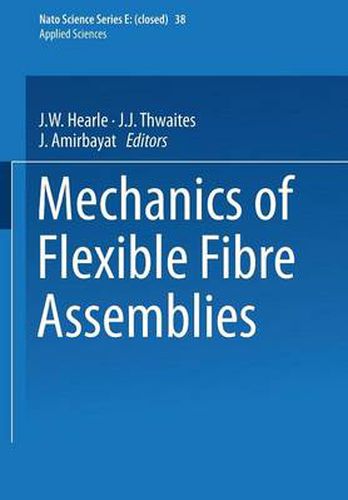Readings Newsletter
Become a Readings Member to make your shopping experience even easier.
Sign in or sign up for free!
You’re not far away from qualifying for FREE standard shipping within Australia
You’ve qualified for FREE standard shipping within Australia
The cart is loading…






This title is printed to order. This book may have been self-published. If so, we cannot guarantee the quality of the content. In the main most books will have gone through the editing process however some may not. We therefore suggest that you be aware of this before ordering this book. If in doubt check either the author or publisher’s details as we are unable to accept any returns unless they are faulty. Please contact us if you have any questions.
Continued and systematic analysis of the mechanics of flexible fibre assemblies dates from about 1945, although the growth of research into textiles after 1920 had included studies of fabric structure and the measurement of mechanical properties. The subject is thus a young one, although this NATO Advanced Study Institute is a sign of developing maturity. However there is an earlier tradition. Relevant, even if somewhat loosely connected, quotations can be found in the works of the engineers of the ancient civilisations, recurring during the llenaissance with Leonardo da Vinci and Galileo. But the glorious libk is with Euler and the Bernoulli family, with their theories of the mechanics of flexible slender rods. While mathematicians have admired the beauty of this work, the invention of elliptic integrals, and the grace of the different classes of planar elastica, it is in the technology of textile materials, composed of flexible fibres and yarns, that the subject has found its more direct application. All this, and much more such as Max Born’s doctoral thesis, was brought to our attention in a delightful discourse by Milos Konopasek, who is not only fascinated by the mathematics of Euler and the modern movement of the solutions of bending curves from two dimensions into three by the use of the computer, but also feels a personal link through having lived and studied within sight of the scene of Euler’s triumphs in St. Petersburg.
$9.00 standard shipping within Australia
FREE standard shipping within Australia for orders over $100.00
Express & International shipping calculated at checkout
This title is printed to order. This book may have been self-published. If so, we cannot guarantee the quality of the content. In the main most books will have gone through the editing process however some may not. We therefore suggest that you be aware of this before ordering this book. If in doubt check either the author or publisher’s details as we are unable to accept any returns unless they are faulty. Please contact us if you have any questions.
Continued and systematic analysis of the mechanics of flexible fibre assemblies dates from about 1945, although the growth of research into textiles after 1920 had included studies of fabric structure and the measurement of mechanical properties. The subject is thus a young one, although this NATO Advanced Study Institute is a sign of developing maturity. However there is an earlier tradition. Relevant, even if somewhat loosely connected, quotations can be found in the works of the engineers of the ancient civilisations, recurring during the llenaissance with Leonardo da Vinci and Galileo. But the glorious libk is with Euler and the Bernoulli family, with their theories of the mechanics of flexible slender rods. While mathematicians have admired the beauty of this work, the invention of elliptic integrals, and the grace of the different classes of planar elastica, it is in the technology of textile materials, composed of flexible fibres and yarns, that the subject has found its more direct application. All this, and much more such as Max Born’s doctoral thesis, was brought to our attention in a delightful discourse by Milos Konopasek, who is not only fascinated by the mathematics of Euler and the modern movement of the solutions of bending curves from two dimensions into three by the use of the computer, but also feels a personal link through having lived and studied within sight of the scene of Euler’s triumphs in St. Petersburg.